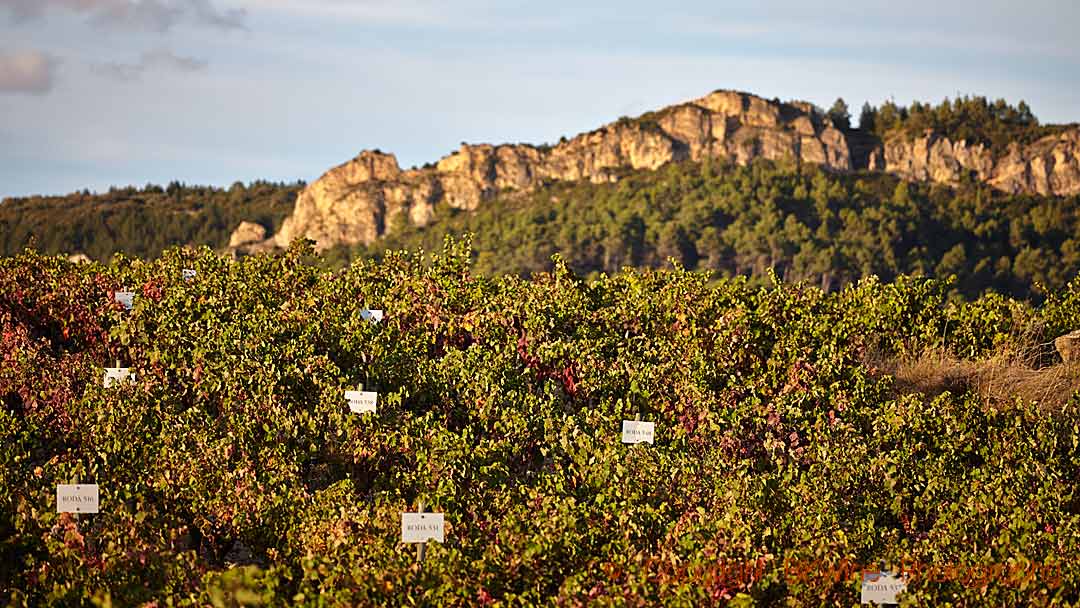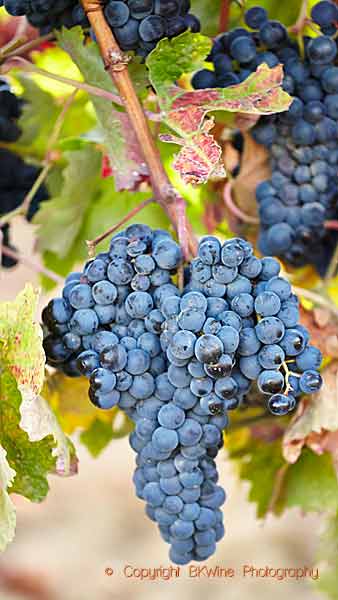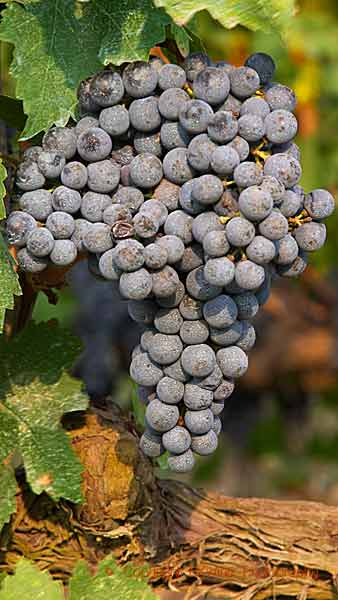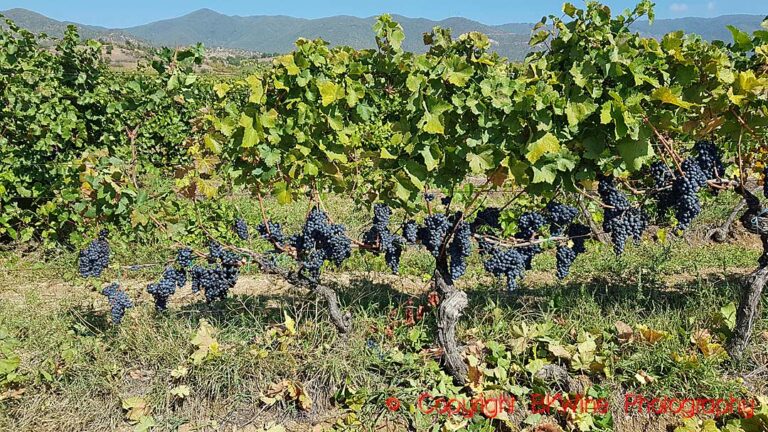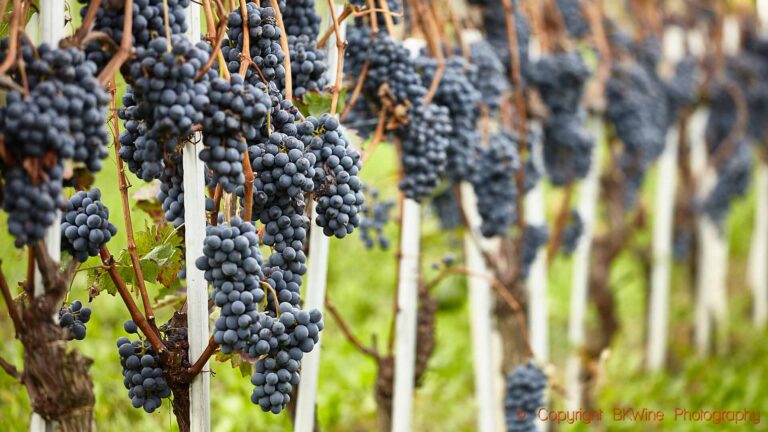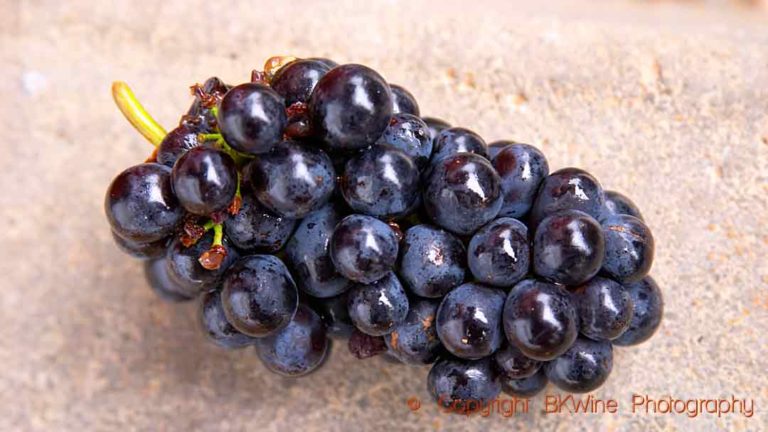Almost all of the world’s most popular quality grape varieties have spread around the globe. But in the world’s top ten list of most planted grapes, there is one that you will find almost only in one country. The grape is the red tempranillo. The country is Spain. Not quite only one country. We’ll get to that soon.
Tempranillo is simultaneously Spain’s workhorse grape and the country’s shining star, a surprising contrast. It produces a wide variety of unpretentious wines from vast vineyards in La Mancha in the centre of the country. But go to Rioja or Ribera del Duero, and you will see what the grape is capable of.
This is a longer version of an article published on Forbes.com.
This is an article in our series of presentations of the world’s most popular and exciting grape varieties. Read other articles here:
Of the world’s 231,000 hectares of tempranillo, there are 203,000 hectares in Spain. The grape has crossed the border into Portugal, where most of the rest is planted, 18,000 hectares. 15 countries share what remains, 10,000 ha. Argentina has the lion’s share of that, 5,500 hectares.
So it is not really a globetrotter grape in the world. But in Spain, which is also the contry with the world’s largest vineyard surface, it is found almost everywhere, except in Galicia in the northwest. It has more than 20% of the country’s total vineyard surface.
Maybe tempranillo is an old grape variety, but we don’t know much about it until the beginning of the 19th century. It probably originated in Rioja or in neighbouring Navarre. It thrives in a warm Mediterranean climate. It can handle heat and drought as long as it is not too extreme. It thrives in soils with clay and limestone.
If you want to keep the acidity and the aromas, you should keep the yields down and plant it where it gets some freshness. In Spain, it’s easier than you might think. A large part of the country’s vineyards is at sufficiently high altitudes to allow the vines to cool down at night. Spain is one of the most mountainous countries in Europe.
The fruit is a hallmark. You can find liquorice, leather and tobacco in the aromas, but the fruit and the berries, such as blackberries, raspberries and cherries dominate. Tannins are present but are rarely particularly strong, even in a young wine.
Rioja
Few grapes are as associated with ageing in oak barrels as tempranillo. The most famous tempranillo wines come from Rioja, and here oak ageing has always been part of the winemaking. A description of tempranillo often becomes a description of oak-aged tempranillo, since so much of it is: brick red colour, soft, smooth vanilla flavour, butterscotch. All this comes from the extended oak ageing that traditionally takes place in old barrels of American oak.
The grape has an outstanding ageing potential in Rioja. The wines become velvety and elegant after several years in the bottle, a bit reminiscent of an older pinot noir. Who has not mistaken one for the other in a blind tasting? It feels like they can never get too old.
Tempranillo is the main grape in Rioja. Of the region’s 65,000 hectares, almost 49 000 is tempranillo. It completely dominates the red wines. It is planted on 87% of the red grape surface.
Some Rioja wines are 100% tempranillo, but the producers often blend it with the region’s other grapes, garnacha, mazuelo and graciano and a few others. Today there is a trend to reduce the time spent in oak barrels and also to release young Rioja wines, without any oak at all, rioja joven. The producers talk about fruit and terroir. Now it is easier to recognize the grape character in the wine.
Ribera del Duero
Just 100 kilometres southwest of Rioja we find the next tempranillo stronghold, Ribera del Duero. Here the grape is alternately called tinto fino and tinto del pais. For a long time, only Vega Sicilia, Spain’s most exclusive wine, was known from the region. But in 1975 came the first vintage of the successful wine Pesquera. Slowly but surely, several new projects saw the light of day in Ribera del Duero. In the 1990s the number of bodegas increased rapidly.
Today there are around 22,000 hectares here, mostly planted with tempranillo. The vineyards are located at an altitude of 850 meters. The vines enjoy cool nights which gives lively acidity and backbone to the wines. Ribera del Duero has received much attention and praise for its concentrated, intense and structured wines.
La Mancha
In La Mancha, the plateau south of Madrid, the tempranillo is called cencibel, and here it toils, alongside the white airén. The climate is harsh with high summer temperatures with scorching sun and occasionally 40 degrees C heat. But cool nights allow the vines to recover. Winters are cold, and precipitation is low. The planting density is very low to enable the grapes to withstand the drought. The focus is on unpretentious, easy-drinking wines that are sold in bulk for almost no money at all. But today more structured wines are also made here. The quality is slowly improving, not least in Valdepeñas in the southern part of La Mancha.
Portugal
Tempranillo has been present in Portugal for a long time. It has grown a lot in recent years and is now the most widely planted grape in Portugal. In Alentejo, it goes by the name of aragoñez. In the Douro Valley, it is called tinta roriz. It is an essential grape for port wines as it gives colour, body and freshness. It is also often used in dry Douro wines. You can also find it in the Dão region of central Portugal where it has become very succesful, often as a single grape variety.
Total worldwide surface: 231,000 hectares
Main countries:
- Spain 203,000 ha
- Portugal 18,000 ha
- Argentina 5,500 ha
Characteristics: Lots of fruit and berries: blackberries, raspberries, cherries, liquorice. Often also leather and tobacco. Medium acidity, balanced tannins. It is often oak-aged, both in American and French barrels.
Synonyms: tinta roriz (Douro Valley), aragoñez (Alentejo), cencibel (La Mancha), tinta del pais (Ribera del Douero), tina fino (Ribera del Duero, La Mancha), ull de llebre (Catalonia)
Don’t miss the other articles in our grape variety profile series. You can find the list at the beginning of the article.
This article was originally published in a shorter version on Forbes.com.


